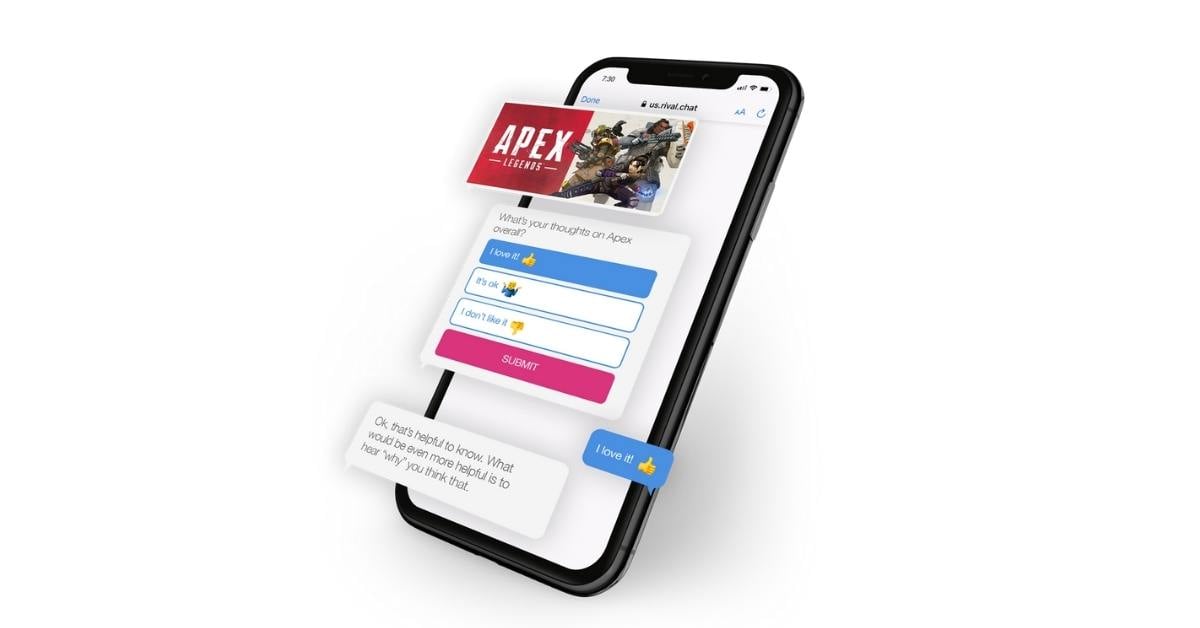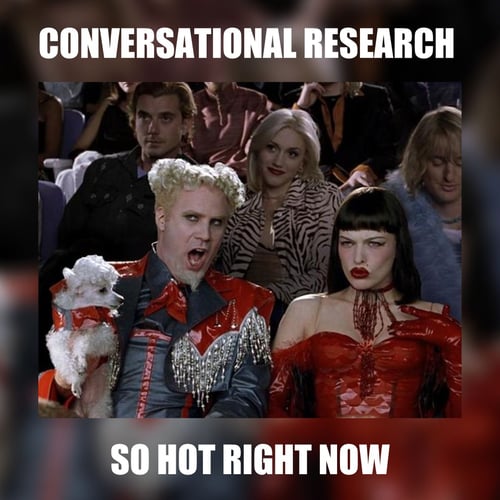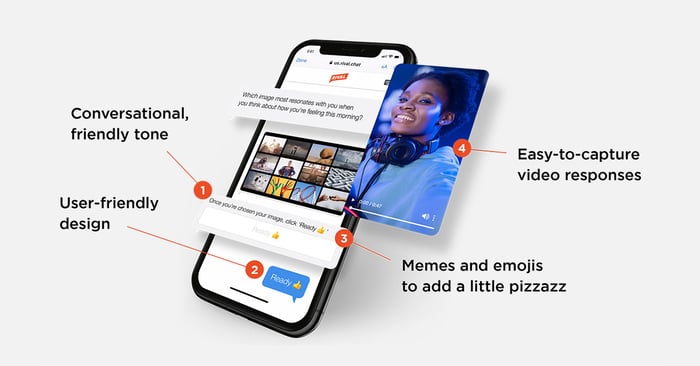
Many people in the insights space are talking about Conversational Research today. It's arguably one of the hottest market research trends in our industry right now.

But here's the thing: there's a lot myths and misunderstanding about this new way of capturing insights. And many insight leaders don't fully comprehend yet what impact this approach can have.
For example, some people think that Conversational Research is only for qualitative studies. Some insight platforms are marketing qual chatbots as "conversational" tech.
In reality, Conversational Research is much more robust than that. Using the power of mobile devices, it allows you to run both quant and qual methodologies in one seamless experience for research participants. Conversational Research enables you to use all of the bells and whistles of traditional market research platforms—all major question types, piping and masking, logic, randomization, anchoring, etc.—and add "message cards" to pre-program appropriate responses throughout your activity,
Another myth: that Conversational Research is only for special projects.
Projects like Gen Z market research.
In fact, Conversational Research is applicable and useful to most research initiatives you can think of: IHUTs, mobile diaries, mobile ethnography, co-creation and ideation, longitudinal studies, insight communities, concept testing, missions, etc. The use cases for Conversational Research are only limited by your imagination.
Conversational Research (sometimes referred to as "Conversational Insights") is a technology and methodology that allows insight professionals to get real-time and better insights from consumers in a more agile and iterative way.
The idea is simple: deliver an experience that feels organic, familiar and fun via channels that people actually use. Today, that's the mobile phone.
Conversational Research uses memes, emojis and video. The result is an experience that is similar to a conversation with a loved one rather than filling out a form or a boring online survey.

The goal: create an environment where people would be more willing to share their real thoughts and feelings. Take advantage of what researchers from Wharton call "attentional narrowing" to encourage research participants to be more candid in their responses.
Conversational Research is inspired by today's chat culture. It engages people during micro-moments throughout the day via short and engaging chat surveys.
If you're curious, give this chat a try: https://ca.rival.chat/c/brt77x81bfx7
All of this, of course, is simply a means to an end: Conversational Research captures deeper, better insights that you can use for better business decisions.
The results are actually quite astonishing:
Many of these results are demonstrated by the growing number of researchers who are already using Conversational Research.
To clarify the definition of Conversational Research and outline its applications, we recently created a short and fun document that outlines what it is. Check it out below! 👇
Subscribe to our blog to receive new insights on market research trends.


No Comments Yet
Let us know what you think